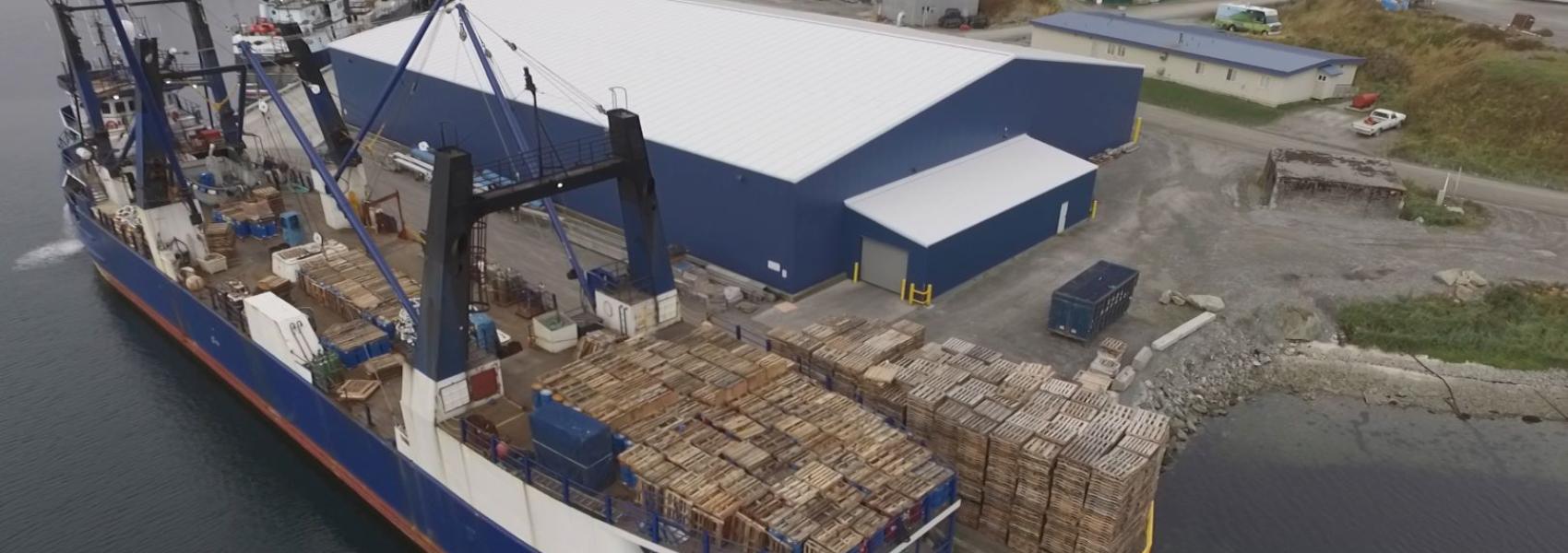With a population of 3000 people, Dutch Harbor the biggest town in the Aleutian Islands and the center of the Bering Sea fishing industry. It’s a remote place renowned for its bad weather, and the only way in or out is by air or by ship.
The names Dutch Harbor and Unalaska are used interchangeably for this port. We have our own terminal in Dutch Harbor where we offload cargo, but we also offload at another six or so docks in the harbor. Generally, our vessels spend about five to six days in Dutch Harbor.
There is little time to go ashore, and cargo operations are fast-paced here. When the ship gets into the harbor, she’ll have half to three-quarters of her cargo holds still filled with cargo. You and your crew will attempt to offload all of this cargo in a mere 48 hours.
Once that’s off-loaded, the ship will begin back-load operations, to transport goods south. Sometimes the cargo comes from the storage facility at our dock. Other times, it comes directly from fishing vessels, either at our dock or elsewhere in Dutch Harbor.
Adjacent to Dutch Harbor is the port of Captain’s Bay. We also do cargo operations in that port, and between these two ports, our vessels might shuffle back and forth several times in a week. It’s about a two-hour run between them.
Most of the southbound cargo we transport is frozen seafood, such as pollock, cod, crab, and salmon. When these frozen goods are loaded onboard, they’re already frozen in cardboard boxes or bags and loaded on pallets.
In addition to frozen seafood, we carry general cargo such as machinery, automobiles, empty drums, gas cylinders, etc. The crew must load this heavy cargo aboard quickly and without damage. Speed and accuracy are very important.
New crew members get the least technical of tasks, such as stacking boxes of fish, stacking dunnage, handling mooring lines, and sweeping the hold. Crew duties also include driving cargo gear, driving forklifts, moving dunnage, lashing down cargo, and cleaning the hold.
The work schedule, when it’s easy, is six hours on, six hours off. However, it’s not uncommon for work hours in Dutch Harbor to be longer.
As with all operations at Coastal Transportation, you’ll need to expect the unexpected. It’s not uncommon for plans to change, even several times, due to weather conditions and fishing operations. To excel in this job, you must be comfortable rolling with frequent changes in plan.
From Dutch Harbor, you might head farther west to Adak and Atka or up north to St. Paul Island in the Pribilofs. You may fill up completely with southbound cargo in the Bering Sea ports, or on the way back to Seattle, you might stop at the Alaskan peninsula ports such as King Cove to top off your cargo. A fully loaded ship could be carrying up to four-million pounds of cargo!
While the work is dangerous, we take pride in our amazing safety record. Our reputation for safety is due to the quality of our officers and the amount of time and effort we take to train new hires.

